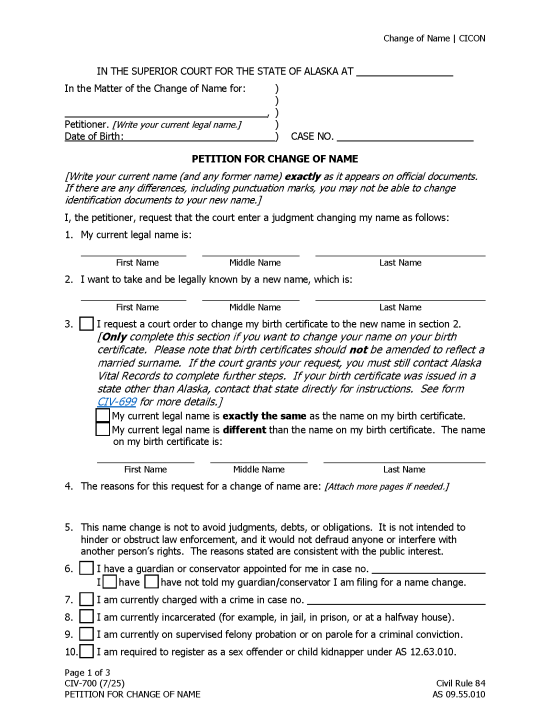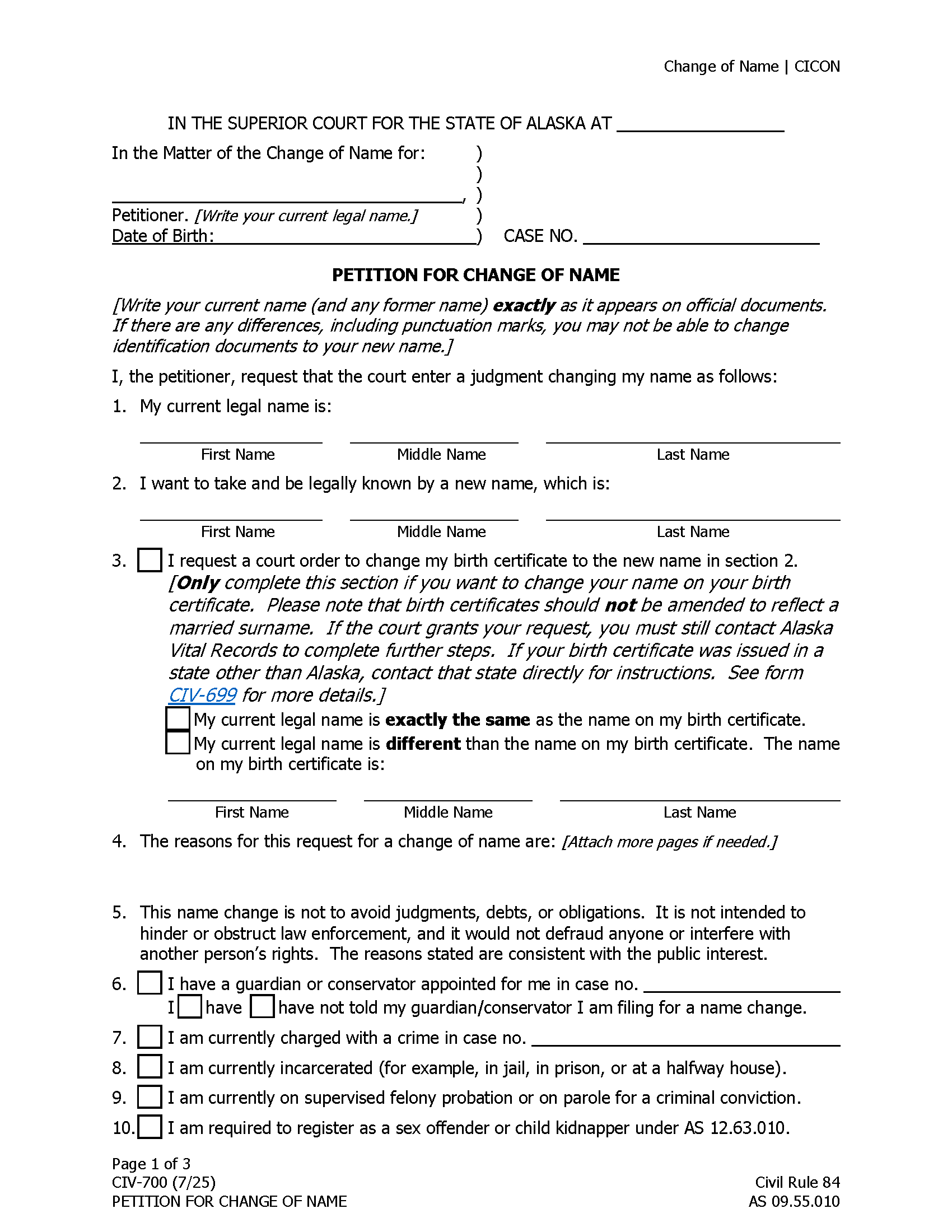Eligibility Requirements
- 18 or older
- Consent of both parents if under 18
- Cannot conflict with public interest
- Cannot be for fraudulent purposes
- Cannot hinder or obstruct law enforcement purposes
- Cannot interfere with others’ rights
Disclosure Requirements
A person who is incarcerated, on probation, on parole, registered as a sex offender, or charged with an offense can still request a name change, but they must disclose this information on the petition.[1]
How to Legally Change a Name in Alaska
Step 1 – Complete Forms
- Cover Sheet (CIV-698)
- Petition for Change of Name (CIV-700) (Notarization Required)
- Application or Report of Change of Name (VS-405)
- Request to Waive Posting (CIV-708) (optional form to avoid public records)
Step 2 – File Petition
Step 3 – TrueFiling
Step 4 – Order for Hearing
Step 5 – Notice
The petitioner’s name change request will be posted on the court’s website for four weeks. (This does not apply if the court approved the petitioner’s request to waive posting.)
In some cases, the order will require the petitioner to send notice to a specific person, entity, or newspaper, although this is generally reserved for situations where the judge determines it would be in the best interests of third parties or the general public to be notified.
Step 6 – Hearing
The petitioner must attend the scheduled court hearing where the judge will review the case. As long as the paperwork is in order and no one contests the name change, the judge will grant the order for name change.
Step 7 – Judgment and Certificate
Before the petitioner can use their new name, the written judgment must be posted on the court’s website for one week. After that week, a Certificate of Name Change (CIV-705) will be issued to the petitioner, who can then use this certificate to update their Social Security card, IDs, licenses, and other important records.
Marriage and Divorce
After getting married, a spouse must obtain a certified copy of their Certificate of Marriage from Vital Records. Then, they can bring it to the Social Security Administration and complete Form SS-5 to obtain a new Social Security card with their updated name.[4] After that, they can use their SS card to update other IDs and licenses.
When getting a divorce, a spouse can restore their previous name by requesting it in their divorce paperwork. If approved, the judge will include the restored name in the final divorce decree.[5]
Resources
Forms
- Cover Sheet (CIV-698)
- Petition for Change of Name (CIV-700)
- Application or Report of Change of Name (VS-405)
- Request to Waive Posting in Adult Change of Name Case (CIV-708)
- Order for Hearing, Posting, and Additional Service (CIV-701)
- Certificate of Name Change (CIV-705)
- Certificate of Marriage
- Application for a Social Security Card (Form SS-5)
Links

